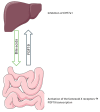Decoding FGF/FGFR Signaling: Insights into Biological Functions and Disease Relevance
- PMID: 39766329
- PMCID: PMC11726770
- DOI: 10.3390/biom14121622
Decoding FGF/FGFR Signaling: Insights into Biological Functions and Disease Relevance
Abstract
Fibroblast Growth Factors (FGFs) and their cognate receptors, FGFRs, play pivotal roles in a plethora of biological processes, including cell proliferation, differentiation, tissue repair, and metabolic homeostasis. This review provides a comprehensive overview of FGF-FGFR signaling pathways while highlighting their complex regulatory mechanisms and interconnections with other signaling networks. Further, we briefly discuss the FGFs involvement in developmental, metabolic, and housekeeping functions. By complementing current knowledge and emerging research, this review aims to enhance the understanding of FGF-FGFR-mediated signaling and its implications for health and disease, which will be crucial for therapeutic development against FGF-related pathological conditions.
Keywords: FGF; FGF pathology; FGF receptor; FGF signaling; Fibroblast Growth Factors; mitogens.
Conflict of interest statement
The authors declare no competing interests.
Figures




Similar articles
-
Glycosylation of FGF/FGFR: An underrated sweet code regulating cellular signaling programs.Cytokine Growth Factor Rev. 2024 Jun;77:39-55. doi: 10.1016/j.cytogfr.2024.04.001. Epub 2024 May 3. Cytokine Growth Factor Rev. 2024. PMID: 38719671 Review.
-
Implications of Fibroblast Growth Factors (FGFs) in Cancer: From Prognostic to Therapeutic Applications.Curr Drug Targets. 2019;20(8):852-870. doi: 10.2174/1389450120666190112145409. Curr Drug Targets. 2019. PMID: 30648505 Review.
-
FGF/FGFR signaling in bone formation: progress and perspectives.Growth Factors. 2012 Apr;30(2):117-23. doi: 10.3109/08977194.2012.656761. Epub 2012 Feb 1. Growth Factors. 2012. PMID: 22292523 Review.
-
Targeting Drugs Against Fibroblast Growth Factor(s)-Induced Cell Signaling.Curr Drug Targets. 2021;22(2):214-240. doi: 10.2174/1389450121999201012201926. Curr Drug Targets. 2021. PMID: 33045958 Review.
-
Non-canonical fibroblast growth factor signalling in angiogenesis.Cardiovasc Res. 2008 May 1;78(2):223-31. doi: 10.1093/cvr/cvm086. Epub 2007 Dec 4. Cardiovasc Res. 2008. PMID: 18056763 Review.
Cited by
-
Hydroxyapatite microspheres encapsulated within hybrid hydrogel promote skin regeneration through the activation of Calcium Signaling and Motor Protein pathway.Bioact Mater. 2025 Apr 14;50:287-304. doi: 10.1016/j.bioactmat.2025.04.002. eCollection 2025 Aug. Bioact Mater. 2025. PMID: 40292340 Free PMC article.
-
Therapeutic potential of natural products in ischemic stroke: targeting angiogenesis.Front Pharmacol. 2025 Jun 18;16:1579172. doi: 10.3389/fphar.2025.1579172. eCollection 2025. Front Pharmacol. 2025. PMID: 40606624 Free PMC article. Review.
-
Paeoniflorin and depression: a comprehensive review of underlying molecular mechanisms.Metab Brain Dis. 2025 Jul 19;40(6):241. doi: 10.1007/s11011-025-01671-1. Metab Brain Dis. 2025. PMID: 40682677 Review.
-
Regulation of epithelial growth factor receptors by the oncoprotein E5 during the HPV16 differentiation-dependent life cycle.Tumour Virus Res. 2025 Jun;19:200315. doi: 10.1016/j.tvr.2025.200315. Epub 2025 Mar 7. Tumour Virus Res. 2025. PMID: 40057277 Free PMC article. Review.
-
Decoding the Function of FGFBP1 in Sheep Adipocyte Proliferation and Differentiation.Animals (Basel). 2025 May 18;15(10):1456. doi: 10.3390/ani15101456. Animals (Basel). 2025. PMID: 40427333 Free PMC article.
References
Publication types
MeSH terms
Substances
Grants and funding
LinkOut - more resources
Full Text Sources

